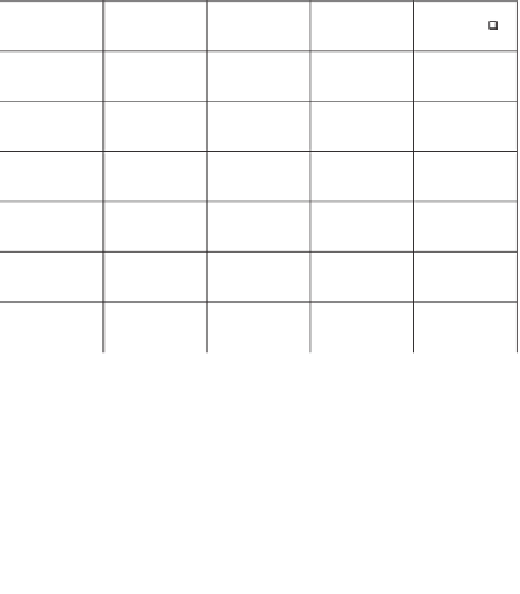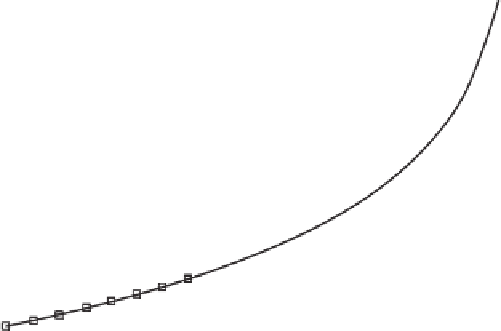Environmental Engineering Reference
In-Depth Information
at the inflection points but at all points along the SWCCs.
Therefore, Eq. 4.48 can be written as follows:
substituted into Eq. 4.53 to provide a relationship between the
percent change in suction between two congruent SWCCs,
ζ
,
and the percent shift in the curves,
ξ
:
100
log
ψ
d
−
log
ψ
w
100
ψ
d
−
100
ψ
d
ξ
=
(4.50)
10
log
ψ
d
−
ζ
=
(4.54)
where:
Equation 4.54 shows that there is a fixed relationship
between the percent change in suction,
ζ
,
and the percent
lateral shift between the drying and the wetting (or median)
curves,
ξ
, as shown in Fig. 4.102. Figure 4.102 shows that
for a lateral shift of 25% the percent error in suction would
be 43.8% for a particular water content. Similarly, for a lat-
eral shift of 50%, the percent change in suction would be
68.4%, and for a lateral shift of 100%, the percent change
in suction would be 90%.
Figure 4.102 can also be used to compare the suction value
computed from the median SWCC and the drying curve.
In this case, a percent shift between the drying and wet-
ting curves of 25% would correspond to a percent shift of
12.5% in going from the drying curve to the median SWCC.
Consequently, the median SWCC significantly reduces the
percent error in the estimated soil suction. Table 4.15 pro-
vides example calculations for the case where the lateral shift
is 50% between the drying and wetting curves. The results
show that the soil suctions on each drying curve produce a
68.4% change (reduction) in the suction on the wetting curve.
Figure 4.103 illustrates another way to visualize the rela-
tionship between suctions on the drying curve and any other
congruent curve. The log-log plot provides a quick estima-
tion of the relationship between suctions on the drying curve
and suctions on any other SWCC if the percent shift between
the two curves is known. The plot applies for any two con-
gruent SWCCs regardless of the
a
and
n
fitting parameters.
Table 4.16 provides a summary of the percent reduction in
moving from the drying curve to the wetting (or median)
curve for each percent lateral shift between the SWCCs.
ψ
d
=
suction at any point along the drying SWCC, kPa,
and
ψ
w
=
suction at any corresponding water content on the
wetting SWCC, kPa.
The equations representing the lateral shift of the SWCC
can be rearranged such that the suction on a congruent
SWCC can be computed from the drying curve. Then Eq.
4.50 can be written as follows:
10
log
ψ
d
−
100
ψ
w
=
(4.51)
Likewise, the suction on the median curve can be writ-
ten as
10
log
ψ
d
−
100
ξ
m
ψ
m
=
(4.52)
Let us define the percent change in suction between any
two congruent SWCCs,
ζ
, as the suction difference between
any two curves referenced to the suction on the drying
curve,
ζ
=
100
(ψ
d
−
ψ
w
)/ψ
d
(4.53)
where:
ψ
d
=
suction on the desorption (or drying) curve, kPa,
and
ψ
w
=
suction on the adsorption (or wetting) curve, kPa.
The same equation applies for a shift to the median curve
at the same water content. Equation 4.51 (or Eq. 4.52) can be
140
120
100
80
60
40
20
0
0
20
40
60
80
100
% Change in suction
Figure 4.102
Percent change in calculated suction as function of lateral shift between drying
and wetting SWCCs.
























Search WWH ::

Custom Search